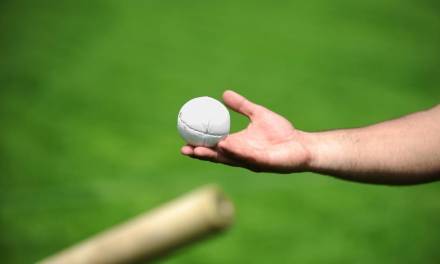Whether you’re 8 or 80, rounders is the ideal team sport that everyone can enjoy. Great for improving hand to eye co-ordination, it can either be played at a competitive level or just for fun in the playground.
If you’re coaching rounders, one of the most fundamental skills to teach is the ability to catch. Not everyone starts with a natural aptitude for catching the ball but there are some top techniques which can help every player learn.
Here are a few ideas to help you effectively coach catching in rounders.
Body position
When trying to catch, most people stretch out their arms and try to reach out to grab the ball as it descends. While this might work sometimes, it’s not the best technique and will fail as often as it succeeds, particularly for a more challenging catch.
One way to instantly improve catching is to focus on body position; this is a basic skill that every player should learn. Although hands are obviously important, the position of the body can make or break a catch, and it’s something that’s often underestimated.
When the ball is in the air, the player should keep their eyes on its flight at all times and move their body to line up with its descent. Moving sooner rather than later is essential; if the player waits too long to see where the ball will come down, there’s a good chance they won’t reach it.
There may be a few adjustments needed – sideways, forwards or backwards – but by keeping the ball in sight and aiming to line their body up underneath, the player will be in the best possible position.
If any adjustments are needed to line up under the ball, small, quick steps are better than larger ones. The weight should be kept forward over the toes at all times, with the centre of gravity closer to the ground; this prevents the player from unexpectedly toppling over as they correct their position.
Safe hands
Once you’ve taught the basics of a good body position, you’ll need to move onto getting the hands right. The instinct for most people is to try and catch it in the palms of their hands as this feels much safer and secure. However, the correct technique involves the use of the fingers, not the palms of the hands.
This may feel counter-intuitive but trying to receive the ball straight into the palms of your hands could mean it bounces straight back out. Lots of dropped catches are because the ball has hit the palm rather than been held by the fingers.
Two hands should be used for catching wherever possible; one handed catches are extremely difficult, even for skilled players. The hands should be cupped with the fingers extended; the fingers should close around the ball and pull it in as soon as it lands.
Anticipate the speed
As mentioned above, the ball travels fast in the air and if players wait to see where it’s likely to come down before moving, they’ll miss their chance to collect the catch.
If it’s a long hit, forget about watching the ball in the air. Instead, players should turn and run hard to try and catch the ball before it travels further. The ball will be moving quickly so players will need to sprint to stand any chance of reaching it.
For a regular catch, staying light on their feet and moving quickly is essential to getting in the right position. However, players also need to be prepared for the impact of catching the ball.
Failing to anticipate the momentum of the ball is another reason for dropped catches; it’s easy to be caught out by the force as the player catches it. Keeping hands and arms relaxed and ready to absorb the impact will help to improve the success rate of catches.









